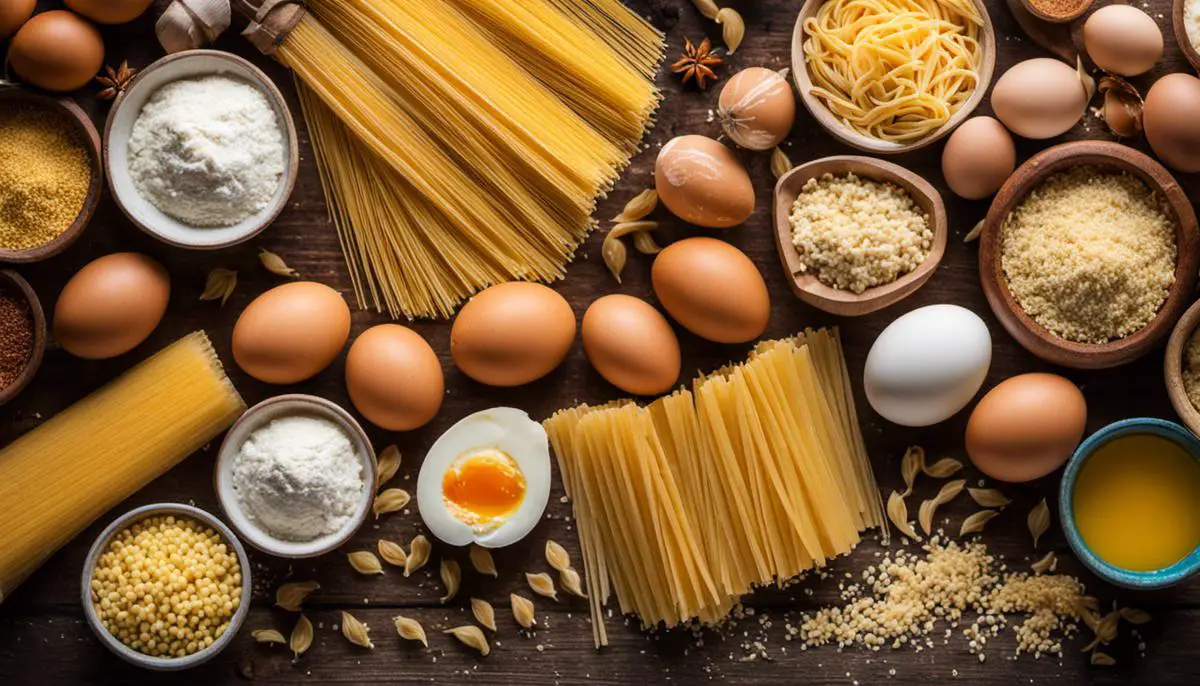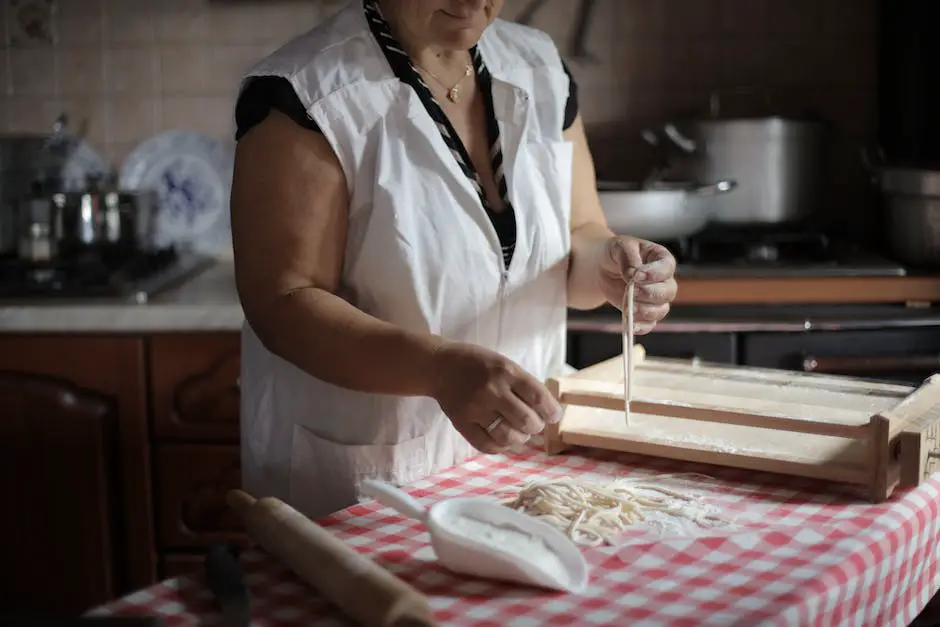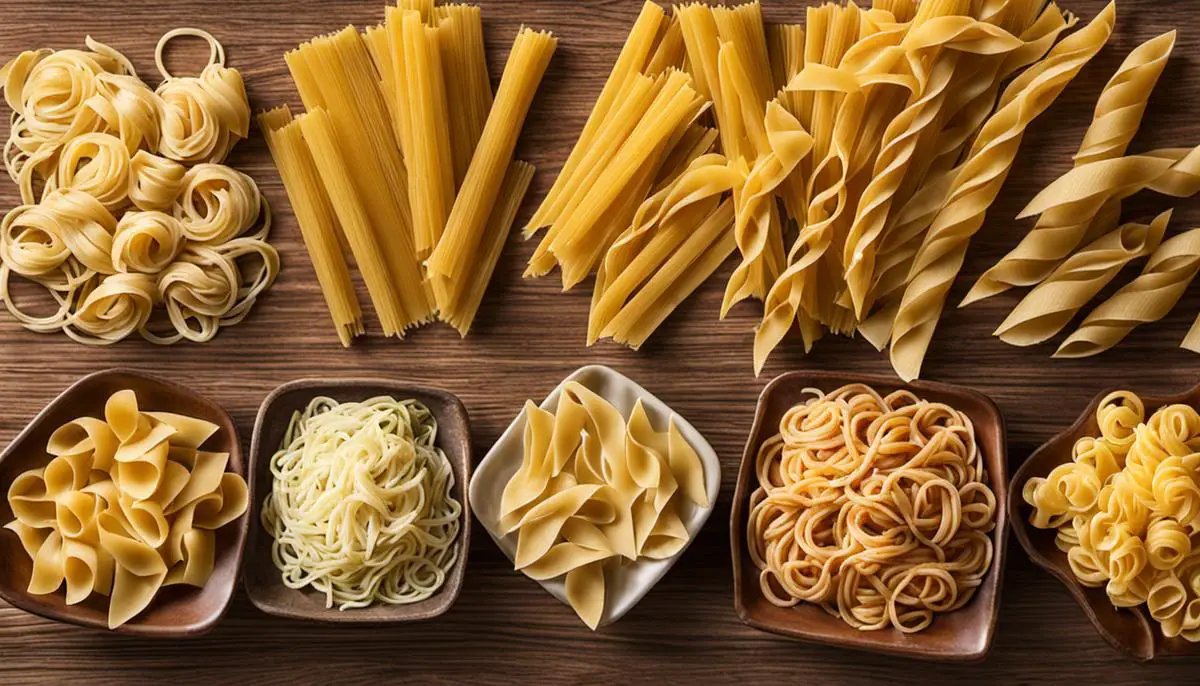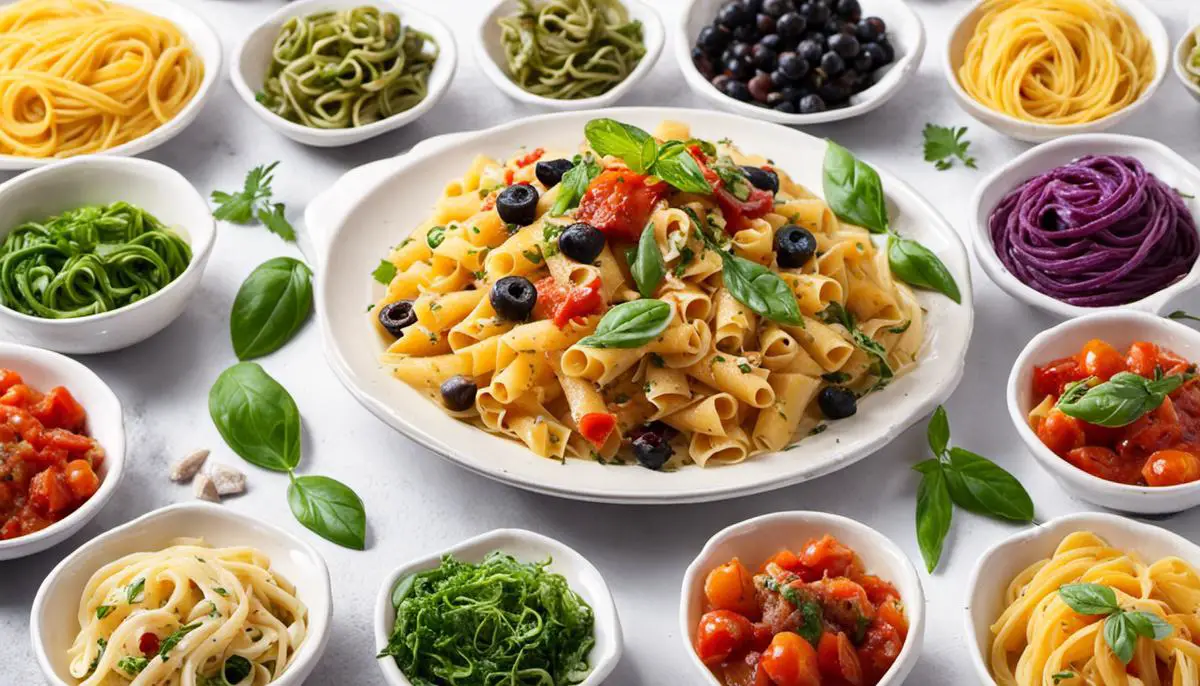Table of Contents
What might initially seem like a simple meal, pasta holds a remarkable depth of culinary culture and expertise all its own. Understanding the intricacies involved in creating homemade pasta can significantly elevate your cooking skills, transforming you from a regular home cook to a potential pasta maestro. This discussion delves into the foundation of pasta making, starting with an exploration of pivotal ingredients, their quality, and how they contribute to the final product. We will unfold various techniques, craft a multitude of shapes and styles, ultimately diving into the ultimate taste test – how to aptly cook and pair your pasta. After all, great pasta not only fills the stomach but also the heart.
Understanding Pasta Ingredients
Understanding Pasta Ingredients
Making homemade pasta requires the right selection of ingredients for your desired outcome. Not every pasta is made the same, true homemade pasta’s authenticity lies in the quality of its ingredients.
The Flour in Pasta
Typically, pasta is made out of Durum wheat, which is the hardest of all wheat. This hardness gives pasta its firmness, and allows it to hold up to cooking. There are different types of Durum flour, but Semolina is the most commonly used in pasta-making. Semolina is high in gluten and protein, giving pasta its distinctive bite and flavor. You may also use all-purpose flour or bread flour if Semolina isn’t available, these substitutes will also work but the quality of the pasta might not be the same.
The Role of Eggs in Pasta
Eggs are another essential ingredient in pasta-making. They give the pasta its color, richness, and flavor. The egg yolks help to emulsify the dough, giving the pasta a finer texture and a beautiful yellow color. However, not all pasta recipes require eggs. In some regional varieties, especially in the South of Italy, pasta is often made with just water and flour, creating a lighter pasta that’s perfect for delicate sauces.
Choosing Quality Ingredients
Knowing how to select the best quality ingredients is a crucial element in pasta-making. Opt for organic, free-range eggs for their rich flavor and beautiful color. When buying flour, choose unbleached flour to avoid any chemicals that might affect the pasta’s flavor. And, if you’re using Semolina, make sure it’s finely ground; coarse Semolina could make your pasta gritty.
Quality ingredients are crucial to the creation of good homemade pasta. Like many other recipes, the fewer the ingredients, the more important their quality becomes. When you’re selecting your flour and your eggs, remember that these ingredients will shape the final flavor and texture of your pasta. So choose wisely and enjoy the process, for it has been said that the secret to good pasta is love and patience.

Pasta Making Techniques
Getting Ready to Make Pasta
To start, you’ll need about two cups of all-purpose flour, and two large eggs. You may also want water and salt on hand to adjust the dough as necessary. You’ll want a clean, flat surface like a kitchen counter or cutting board to work on. Make sure your hands are washed and clean before you start.
Mixing the Dough
To begin, pile your flour in the center of your work surface. Using your fingers, or the back end of a spoon, create a well in the center of the mound. This is where you’ll add your eggs. Crack both eggs into this well and using your fingers or a fork, begin to scramble the eggs, gradually pulling in flour from around the edges as you go. Continue this process until the egg and flour are thoroughly combined.
Kneading the Dough
Once your dough begins to form a shaggy mass, it’s time to start kneading. This process is critical in developing the gluten in the flour, which will give your pasta its structure and chewiness. Dust your hands lightly with flour and begin to work the dough, using the heel of your hand to press and fold the dough onto itself. Rotate it by 90 degrees and repeat, continuing this kneading process for about 8-10 minutes until the dough is smooth and elastic.
Resting the Dough
After kneading, your pasta dough needs time to rest. This allows the gluten to relax, which will make rolling out your pasta much easier. Wrap your dough in plastic wrap or a clean kitchen towel and let it rest at room temperature for at least 30 minutes.
Rolling the Dough by Hand
When your dough has rested, it’s ready to be rolled out. Start by dusting your work surface with flour. Flatten your dough into a disk and begin rolling, working from center out. Flip and rotate your dough as you go to ensure an even thickness. Your goal is a thin sheet of dough that’s almost translucent.
Using a Pasta Machine
If you’re using a pasta machine to roll out your dough, start by dividing your dough into pieces and keep the unused ones covered so they don’t dry out. Flatten one piece into a rough rectangle, and feed it through the machine at its widest setting. Fold this lengthwise into thirds, turn 90 degrees, and feed it through again. Repeat this process a few times at each thickness setting until you get the desired thickness.
Cutting the Pasta
Once your pasta sheet is ready, you can cut it into noodles. For hand-cut pasta, simply fold your sheet of dough loosely and slice it to your desired width. For machine-cut pasta, feed your sheet through the cutting attachment on your pasta machine. Be sure to dust your cut pasta with a little flour to prevent sticking, then it’s ready to cook or dry for later use.
Conclusion
Pasta making can seem like a difficult task, but with these techniques and a little practice, you’ll be on your way to creating fresh, homemade pasta in no time.

Pasta Shapes and Styles
Understanding Pasta Shapes
Pasta comes in numerous shapes and sizes, each with its own unique characteristics and purposes. The most common among these include spaghetti, ravioli, fusilli, penne, and fettuccine. Spaghetti is a long, solid strand of pasta that can come in varying thickness. Ravioli is a type of dumpling usually filled with various ingredients like meat, cheese or vegetables, and is often square in shape. Fusilli appears as a twisted spiral, courtesy of its twisted preparation style. Penne is a tube-shaped variety with sharp diagonal cuts at each end, and fettuccine is a flat, thick, ribbon-like pasta.
Hand-Rolled Spaghetti
Creating hand-rolled spaghetti is somewhat of a delicate art. Begin by rolling out your pasta dough into a large, thin sheet. Once the dough canvas is prepared, roll it up into a loose cylinder. Take a sharp knife and make incisions across the cylinder, making the cuts as evenly spaced as possible. Unroll the spiraled dough, and voila! You have hand-rolled spaghetti.
Pasta Machine-Rolled Spaghetti
Some kitchens have the luxury of access to a pasta machine. For spaghetti, use the spaghetti attachment on your machine. Put the prepared dough through the machine, and it will cut the pasta into perfectly uniform spaghetti strands.
Hand-Made Fusilli
To make fusilli by hand, start by rolling a tiny piece of dough into a thin, long rope-like strand. Then wind this around a thin rod or skewer in a spiral fashion. Slide the wound pasta off carefully, and there you have it: a hand-made fusilli.
Ravioli: A Delightful Pasta Pocket
Creating ravioli involves filling the pasta, making it slightly more complex. Start with a thin sheet of pasta dough. Place small scoops of your chosen filling at regular intervals on one-half of the sheet. Fold the other half over the filling. Press around each mound of filling to seal it in, and then cut out the individual ravioli pieces using a ravioli cutter or even a pizza cutter.
Pasta Machine Ravioli
If you’ve got a ravioli mould or attachment for your pasta machine, it’ll ease the process. Line the mould with a pasta sheet, add the fillings, and then place another sheet on top. Use a rolling pin to seal and cut the ravioli shapes.
Creating Penne and Fettuccine
For penne and fettuccine, you’ll need either a hand pasta cutter or specialized pasta machine attachments. For penne, the pasta dough must be extruded through a tube and cut at an angle. And to achieve fettuccine, rolled dough is sliced into ribbon-like shapes. Without specific machinery, these shapes can be challenging to duplicate exactly at home.
By mastering these pasta-shaping techniques, you’re well on your way to creating a plethora of delicious Italian dishes right in your kitchen. Enjoy your pasta making journey!

Cooking and Pairing Pasta
Choosing the Right Pasta
Firstly, knowing the variety of pasta shapes is vital when starting to make homemade pasta. Some pasta types include spaghetti, fettuccine, pappardelle, lasagna, and penne. Each shape pairs differently with sauces and has a unique texture. For instance, long and supple pastas like spaghetti or linguini pair well with light tomato sauces or oil-based sauces. On the other hand, thicker, larger pastas like pappardelle or lasagna are ideally partnered with heavier meat or cream-based sauces. Tubular shapes such as penne and rigatoni are fantastic with chunky sauces as they can hold more sauce inside.
Preparing the Pasta Dough
To make the pasta dough, combine approximately two cups of all-purpose flour with two large eggs, a tablespoon of water, and a pinch of salt. Knead the mixture by hand until you achieve a smooth, elastic texture. This process may take around 10 minutes. Once the dough is worked to the right consistency, cover it and let it rest for about 30 minutes before rolling it out.
Rolling and Cutting the Pasta
After the dough has rested, lightly flour your work surface and roll out the dough with a pasta machine or a rolling pin until it’s thin as desired. If you’re making a long pasta, roll it in a large rectangle and cut it into narrow strips. For stuffed pasta like ravioli, cut the dough into even squares.
The Importance of Salting the Water
When it comes to cooking your handmade pasta, don’t forget the importance of salting the water. Adding enough salt to the boiling water is crucial because it flavors the pasta directly as it cooks. Without this step, homemade pasta can taste bland, even with a spectacular sauce.
Cooking the Pasta
The cooking time for the pasta highly depends on its thickness. However, a general rule of thumb is that fresh pasta cooks faster than its dried counterpart. It should usually take 3-5 minutes for thin noodles, but you should always taste for doneness to gauge the perfect cooking time.
Experimenting with Pasta Recipes
Although there are countless types of sauces to pair with pasta, it’s also fun to experiment with your own ideas. Perhaps a classic garlic and olive oil sauce with a twist of grilled vegetables, or a spicy, creamy tomato sauce with chicken. The beauty of pasta is its versatility and its ability to absorb different flavors well. In addition, finishing your pasta dish with a fresh grating of parmesan cheese never hurts.
Pairing Pasta with Wine
Finally, pairing pasta with the right wine can elevate your homemade dinner to a gourmet level. A light-bodied white wine, like a Pinot Grigio, pairs wonderfully with pasta dishes that have a seafood or light tomato sauce. Red wines, such as a Sangiovese or Chianti, complement hearty dishes with robust meat or tomato-based sauces. Remember, wine pairing is about balance, and by matching the characteristics of the sauce with the wine, you’ll achieve the perfect pairing.

A foray into the art of homemade pasta introduces one to a rich tapestry of knowledge from selecting quality ingredients to crafting matchless pasta shapes and styles. As we’ve discovered, each element carries its own significance, contributing to a pasta dish’s final allure. Mastering correct cooking techniques, understanding the importance of seasoning water while cooking, and aptly pairing pasta with sauces undoubtedly uplift the whole dining experience. Experimenting with pasta recipes allows for the merging of tradition with personal flair. The world of pasta is vast and holds unlimited potential for culinary exploration, offering an exciting journey for every home cook who dares delve into this art form.
